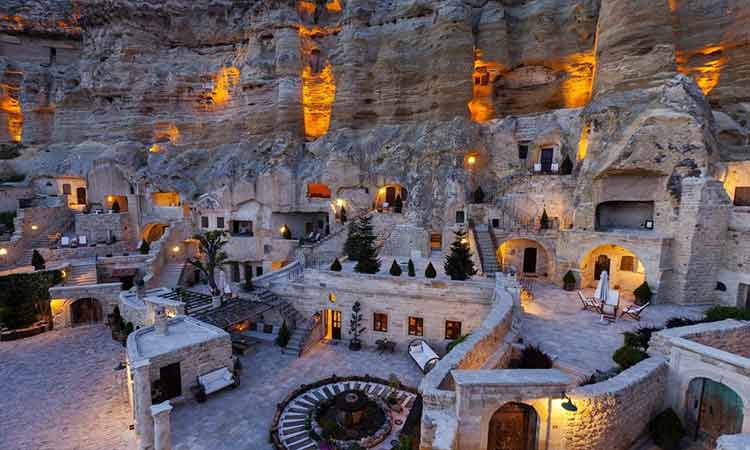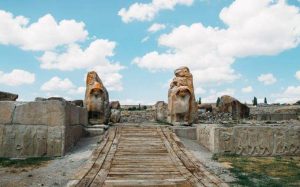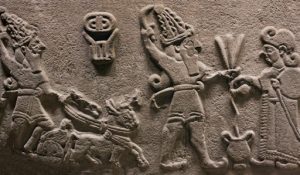Ancient Cities in Turkey
The region known in ancient times as Cappadocia is the setting for some of nature’s most bizarre wonders. It incorporates the provinces of Aksaray, Nevşehir, Niğde, Kayseri, and Kırşehir.
For most people, the name Cappadocia suggests the towns and vicinities of Uçhisar, Göreme, Avanos, Ürgüp, Derinkuyu Kaymaklı, and Ihlara, where, in the course of millions of years. The land has been shaped into fantastic forms. “Fairy chimneys” that seem haunted, and cities and houses of worship that extend many meters deep into the earth are all enveloped in an atmosphere that is ethereal and unworldly. This text gives brief information about the Cappadocian region, where Mother Nature painstakingly worked miracles that defy the imagination and where the living elements of history, culture, art, and society are inextricably linked. Millions of years ago, three of the mountains in Cappadocia -Erciyes, Hasandağ and Güllüdağ – were active volcanoes; indeed. this activity persisted intermittently at least into the Neolithic period if one considers the evidence of prehistoric paintings found on the walls of caves pointed, columnar, mushroom-shaped and even a type that looks as if it’s wearing a hat! The Cappadocian region has been inhabited since prehistoric times. The evidence of this is plentiful, but the best examples of it have been unearthed at Köşk Höyük in Niğde and Aşıklı Höyük in Aksaray as well as in the Civelek Cave in Nevşehir. During the Early Bronze Age, Cappadocia came under the influence of Assyrian civilization thanks to extensive trade, and it was during this period that vvriting was introduced. Researchers have turned up hoards of so-called “Cappadocian tablets”- clay tablets inscribed with cuneiform writing – whose texts speak of tax regulations, interest rates, marriage contracts, trade disputes, and much else besides. The Hattis, followed by the Hittites, Phrygians, Persians, Romans, Byzantines, Seljuks, and Ottomans were all the emptions appear to have begun in the Upper Miocene, less than 70 million years ago, in which lava began to flow from volcanoes submerged in Neogene lakes. The plateau of tuff formed from the materials discharged by the main volcanoes was continuously altered by the eruptions of smaller and less violent volcanoes.
From the Upper Pliocene onwards, these layers of tuff were exposed to erosion by rain and the waters of lakes and rivers, particularly the Kızılırmak, resulting in what we see today. Floodwater pouring down the sides of valleys combined with strong winds töre away the softer volcanic rock exposing the harder varieties and resulting in the formations known as “fairy chimneyş” of which there are several types in Cappadocia – conical, enchanted by the allure of Cappadocia and left the imprint of their own presence here. Because of its location, Cappadocia was an extremely critical and strategic region. Important trade routes – including the illustrious Silk Road – traversed it both east and west and north and south. As a result of this heavy traffic, the region was a complex web of historical and cultural intluences. Cappadocia was where different faiths and philosophies met and influenced one another. Cappadocia’s trade and resources were tempting prizes and the region was frequently invaded, raided, and looted. To protect themselves from such depredations, the local inhabitants took to living in the region’s cavems and grottos whose entrances could be concealed so as not to be noticed by trouble-making outsiders. Since it might be necessary to lie low for extended periods of time, these troglodytic dwellings eventually became subterranean cities that included sources of water, places to store food, wineries, and temples. Some of them date back to before the Christian era. In the early years of the first millennium, groups of Christians fleeing from Roman persecution began moving into the inaccessible wilds of Cappadocia seeking refuge. One group, which arrived here from Jerusalem via Antioch (Antakya) and Caesarea (Kayseri) in the second century, settled down in the area now called Derinkuyu. Finding the soft volcanic tuff easy to carve, they began expanding the natural caves, linking them together and in addition to dwellings, creating chapels, churches, and whole monasteries as they shaped with their fıearts, minds, and hands the peace and security that they so desperately sought. There are said to be more than a thousand churches and chapels in Cappadocia. The variety and artistry of their architecture, ayout, and decoration are fascinating and amazing.




